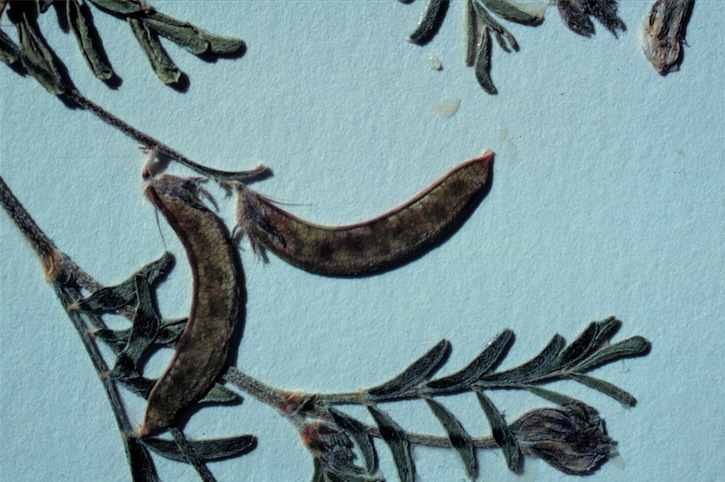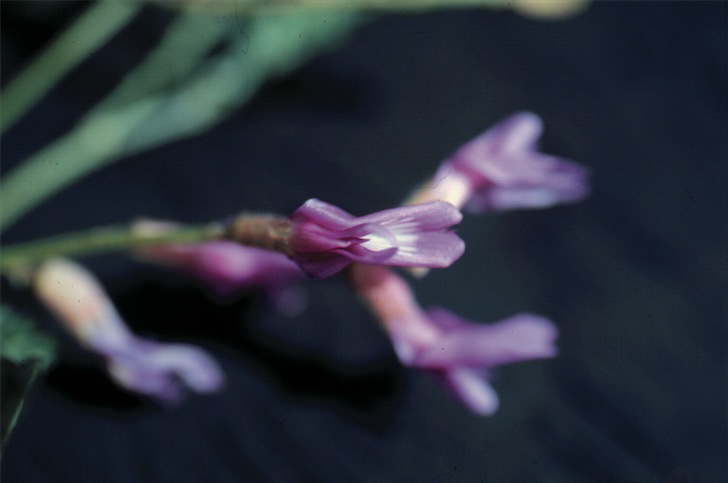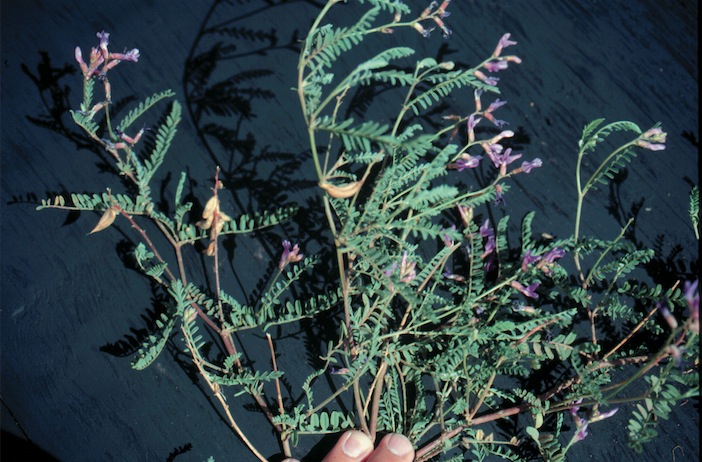Selected Plants of Navajo Rangelands
Red stem peavine
Ch’ilna’át’ó’í
(a.k.a. locoweed, Emory's milkvetch)

Red stem peavine has stems in loose mats, leaflets less than 1/2 inch long, and pods that are straw-colored and falling from the stem, splitting open while on the ground.
The plants are annual or winter-annual, seldom persisting into a second year. The stems spread, forming tangled mats, and flower clusters are spreading or drooping. Stems have 1 to 12 flowers with pink-purple petals. Pods are spreading to drooping, narrow, often curved in a half-moon shape, falling from the stem and splitting open from both ends while on the ground. Pods are 1/2 to 1 inch long and 3/16 to 5/16 inch wide. Flowering March to June, red stem peavine grows in desert grassland, desert scrub, and juniper forest on gravel to clay-loam soils at an elevation of 2,000 to 7,000 feet.
This toxic species is very similar to Astragalus nuttallianus, which apparently is not toxic and may provide valuable forage. Not all locoweeds are poisonous or toxic. The main difference between the two is that the pods of A. nuttallianus persist on the stem and split open from only the tip while on the stem, whereas the pods of A. emoryanus readily fall from the stem and split open from both ends while on the ground. Its principal toxins are nitro-compounds and swainsonine.


Copyright 2018 New Mexico State University. Individual photographers retain all rights to their images. Partially funded by the Western Sustainable Agriculture Research and Education Program (westernsare.org; 435.797.2257), project EW15-023. Programs and projects supported by Western SARE are equally open to all people. NMSU is an equal opportunity/affirmative action educator and employer..
NMSU does not discriminate on the basis of age, ancestry, color, disability, gender identity, genetic information, national origin, race, religion, retaliation, serious medical condition, sex (including pregnancy), sexual orientation, spousal affiliation or protected veteran status in its programs and activities as required by equal opportunity/affirmative action regulations and laws and university policy and rules. For more information please read the NMSU Notice of Non-discrimination (opens in new window).

